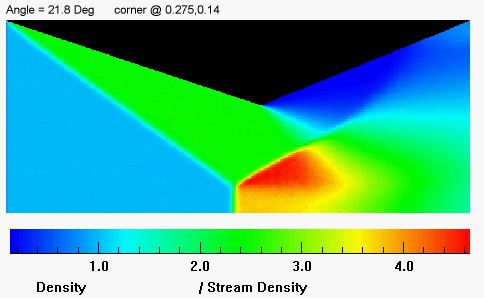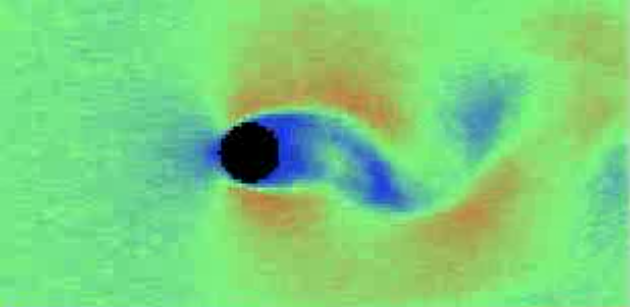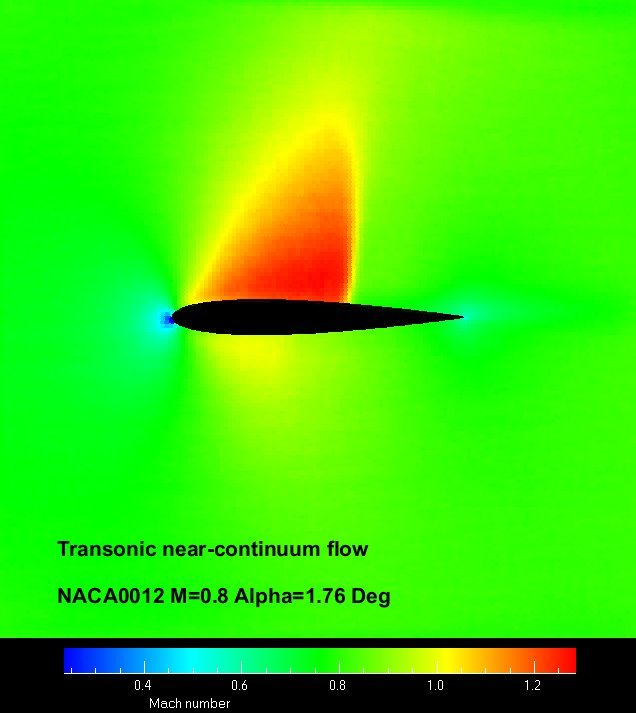DSMC
Direct Simulation Monte-Carlo
The DSMC (Direct Molecular Simulation - Monte Carlo Method) gas flow simulation technique was pioneered by Emeritus Professor Graeme Bird at the Department of Aeronautical Engineering, University of Sydney. The method was originally used for simulation of rarefied gas flow around rentry vehicles, but has now progressed to the stage of being a useful tool for solving a large range of aerodynamic and aerospace problems.
Where can you get the software?
View a demo of the method.
View some sample solutions.
SAMPLE RESEARCH SOLUTIONS
Some of the projects now being undertaken in the school using this method are
Here are some flow pictures of our recent projects.
Interaction of Shock and Boundary Layer Flow
Mach No. Contours

Rankin-Heugonot Mach Reflection Flow
Density Contours for Mach Reflection Solution

Nano-size Cavity Flow (Moving Lid)
Flow Direction Vectors (Not including Amplitude) for Flow induced in a Moving Lid Cavity.

Gas Jet Instability.
Mach Number and Vertical Velocity Contours showing asymetric solution for gas jet at Reynolds
number 250.
Initial jet is symmetric parabolic flow from nozzle.


Time varying solutions have been obtained which match the unsteady nature of this type of flow.
1. Unsteady expansion.

2. Circular Cylinder.

Transonic near-continuum flow.
Mach Number Contours showing transonic shock solution for NACA0012 at an angle of attack of 1.76 degree. A simulated Reynolds number of infinity is employed.

DEMONSTRATION PROGRAM
The Visual Wind Tunnel DSMC demonstration program is restricted to the number of
simulated molecules that permit real-time animation of the moving molecules to
illustrate selected two-dimensional and axially symmetric flows at the molecular
level. This version employs about 16,000 simulated molecules at (800x600) resolution.
for further information contact [email protected].